Spanish Numbers: How to Count from 0 – 1,000+ in Spanish | 2024 (with Photos)
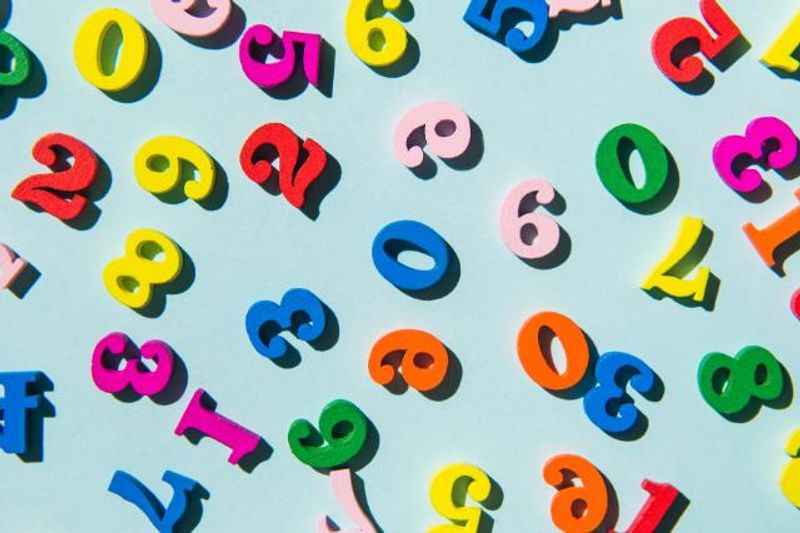
Learning how to count and say specific numbers is a key part of any language. Not only does it come in handy when quantifying something, but it is also needed when we refer to dates, times, saying how old we are etc…
Learning Spanish can be tough, but learning to count in Spanish is not difficult.
There are certain numbers that you simply need to remember, but the vast majority of numbers in Spanish between 1 – 100 are part of a simple pattern.
By the end of this article, you will know how to write, pronounce and understand Spanish numbers, specifically how to count from 0 – 1,000+ in Spanish.
Spanish Numbers 1 - 100
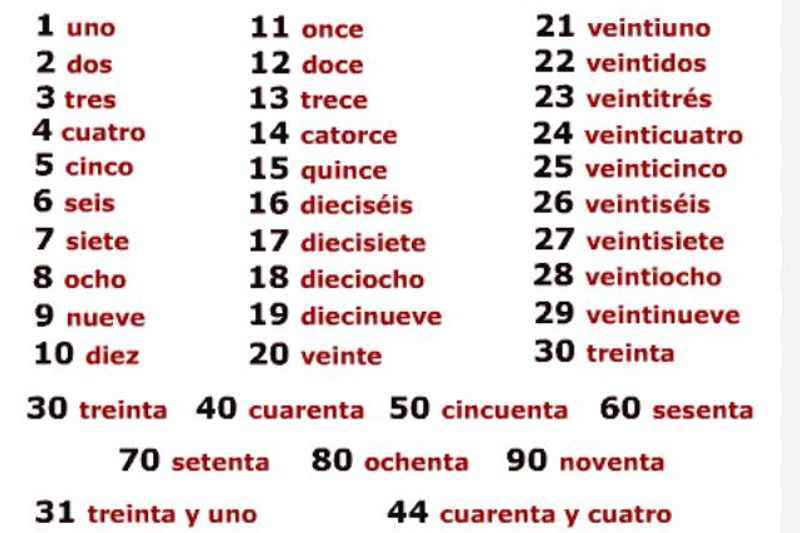
Let's look at the Spanish numbers 1 to 100. Once you've learned these, we'll explain some ways to remember them.
How to Count from 1 - 10 in Spanish
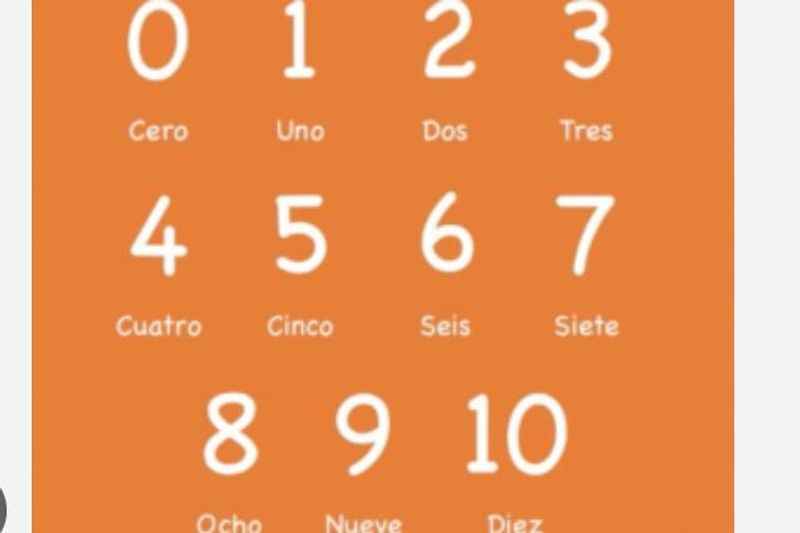
- 1 - uno
- 2 - dos
- 3 - tres
- 4 - cuatro
- 5 - cinco
- 6 -seis
- 7 - siete
- 8 - ocho
- 9 - nueve
- 10 - diez
How to Count from 11 - 100 in Spanish
This may seem a little overwhelming and a lot to take in at once, but if you look carefully, and watch the video, you will see that most of these numbers are part of a simple pattern.
Firstly, you need to remember:
- 11 - once
- 12 - doce
These are nice and simple. They actually rhyme, whether you prefer to pronounce them ‘ontheh’ ‘dotheh’ or ‘onseh’ ‘doseh’
The ‘th’ sound is used in Spain (in most parts) and the softer ’s’ pronunciation is used in Latin America (and some parts of Spain).
Teenage numbers in Spanish
After 11 (once) and 12 (doce), there are a few more that, simply put, you just need to remember.
- 13 - trece
- 14 - catorce
- 15 - quince
Again, the pronunciation will depend on your preference.
Then, we have:
- 16 - dieciseis
- 17 - diecisiete
- 18 - dieciocho
- 19 - diecinueve
By now, you may have already learned the word for 10 - diez, as well as 6 - 9.
If you look carefully, you will see that 16 - 19 are simply 10 + the relevant number.
Look at this:
- 16 - dieciseis/ ten and 6
- 17 - diecisiete/ ten and 7
- 18 - dieciocho/ ten and 8
- 19 - diecinueve/ ten and 9
The next number is:
- 20 - veinte
Multiples of 10 in Spanish
Once you have learned 0 - 19, it is recommended to learn the multiples of 10.
- 20 - veinte
- 30 - treinta
- 40 - cuarenta
- 50 - cincuenta
- 60 - sesenta
- 70 - setenta
- 80 - ochenta
- 90 - noventa
Remembering Spanish Numbers with a Simple Formula
Remember what we learned for numbers 16 - 19.
You can take the word for 10 (diez) add ‘y’ (and) followed by the digit.
“diez + y + (digit).”
For example:
“diez + y + ocho” = diez y ocho, which contracts to dieciocho.
Think about it - it’s just like English, where the two words "six" + "ten" = Sixteen.
Numbers of Above Twenty in Spanish
For numbers above twenty, simply take the the multiples of ten (veinte, treinta, cuarenta, cincuenta, sesenta, setenta, ochenta, noventa) and the smaller number (uno, dos, tres, cuantro, cinco, seis, siete, ocho, nueve, diez) and add “y” (“and”) in the middle.
For example:
- 45 = “forty and five” = cuarenta y cinco
- 56 = “fifty and six” = cincuenta y seis
- 98 = “ninety and eight” = noventa y ocho
- 72 = “seventy and two” = setenta y dos
Remember also that numbers from 21-29 get contracted into one word, instead of broken down into three separate words like all the others.
So, instead of “veinte y cinco”, it would be “veinticinco”.
Zero and One Hundred in Spanish
There are two important numbers we have not covered:
- zero = cero (you will see that these are very similar)
- 100 = cien (note the link with English words that resemble this like “century”, “centipede”, “percent”)
So, by taking the simple steps mentioned above, you’ll have the numbers 1-100 in Spanish memorised in no time.
Spanish Numbers in Example Sentences
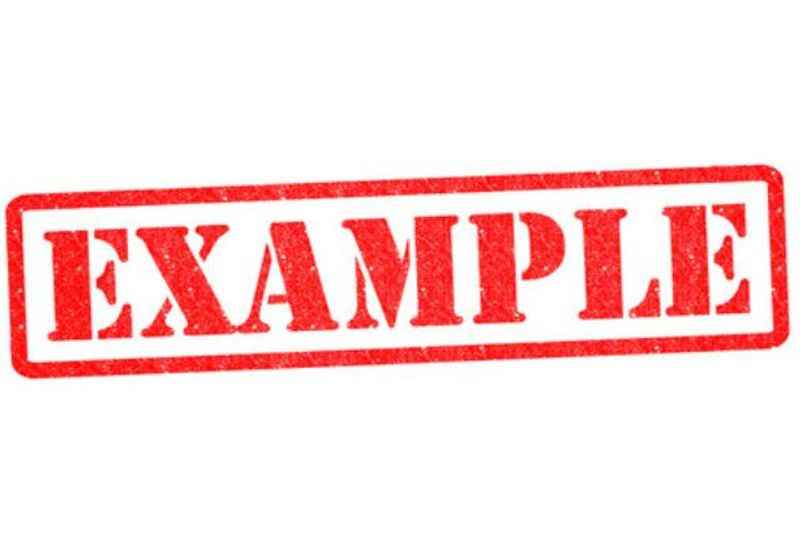
- Cuarenta y uno perros ladrando en la calle - Forty-one dogs barking on the street
- Treinta y dos estudiantes en el aula - Thirty-two students in the classroom
- Cuarenta y dos libros en la estantería - Forty-two books on the shelf
- Sesenta y uno minutos para llegar a casa - Sixty-one minutes to get home
- Cincuenta y seis pájaros volando en el cielo - Fifty-six birds flying in the sky
- Ochenta y tres personas en la reunión - Eighty-three people in the meeting
- Cuarenta y seis dulces en la caja - Forty-six candies in the box
- Noventa y dos días de vacaciones este año - Ninety-two days of vacation this year
- Noventa y cinco grados de calor en verano - Ninety-five degrees of heat in summer
- Ochenta y seis kilómetros para llegar a la ciudad - Eighty-six kilometers to reach the city
Spanish for “One”: Un, Uno, or Una?
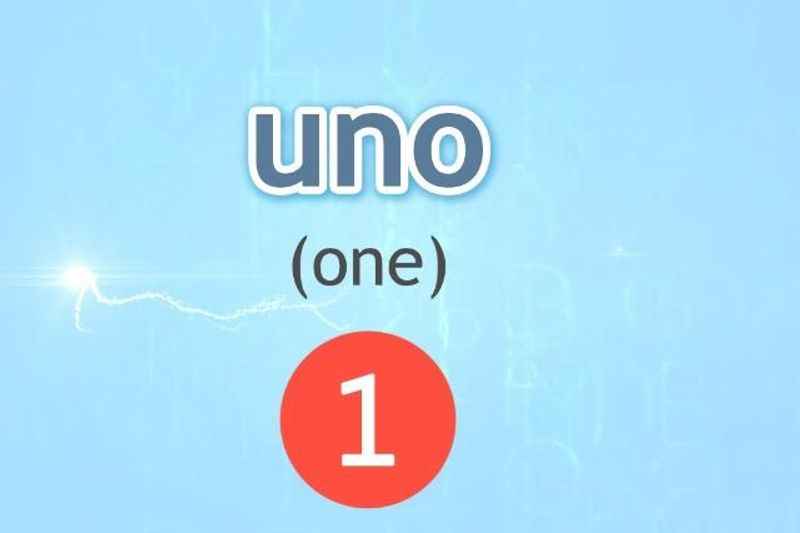
If you have been learning Spanish for a while, or if you have been using travel-lingual as a source to learn, then you may have noticed that Spanish doesn't distinguish between “one” and “a” in the same way that English does.
- Un coche can mean “a car” or “one car”.
It's important to note that the word uno changes to match the gender of the noun it describes.
Before a feminine noun, it becomes una.
Before a masculine noun, you drop the o and just use un.
The examples below should be useful for you.
- Un coche – a car/one car. Drop the “o” from “uno” because it's followed by a masculine noun.
- Una casa – a house/one house. Change “uno” to “una” because it's followed by a feminine noun.
- Tengo uno – “I have one”. “Uno” is unchanged because it's not followed by a noun.
- “¿Hay dudas?” “Sí, hay una.” – “Any doubts?” “Yes, there is one”.
In this case you use una because you're referring to a duda (doubt), which is a feminine word.
Spanish for 100: Cien or Ciento?
It is worth remembering at this early stage that the number 100 can be translated into Spanish as either cien or ciento.
There is a difference between the two.
You should use ‘cien' when there are exactly one hundred of something in quantity.
For example:
- Cien coches = one hundred cars
- Cien casas = one hundred houses
- ‘Ciento’ is used if it is forming a larger number, however.
For example:
‘one hundred and one’ = ciento uno.
Forming large numbers, like the vast majority of numbers in Spanish between 0 - 100, is relatively straightforward.
Again, you are just remembering a simple pattern, or set of rules.
Spanish Numbers - Counting from 100 to 199 in Spanish
For numbers from 100 to 199, use ciento:
- 102 = ciento dos
- 125 = ciento veinticinco
- 187 = ciento ochenta y siete.
You will see here that we do not add ‘y’ after ciento – it's ciento dos, not ciento y dos.
Counting from 200 to 999 in Spanish
What about numbers between 200 and 999?
Just as we learned the multiples of 10 in the first section of this text, we must now learn the multiples of 100.
You will see below that this is really straightforward.
- 200 = doscientos
- 300 = trescientos
- 400 = cuatrocientos
- 500 = quinientos
- 600 = seiscientos
- 700 = setecientos
- 800 = ochocientos
- 900 = novecientos
Do You Spot Any Irregularities?
You may have seen that 500 (quinientos), 700 (setecientos), and 900 (novecientos) have their own pattern.
That is to say, they are not ‘cincocientos’ ‘sietecientos’ and ‘nuevecientos.’
It is definitely worth remembering that these eight Spanish numbers (doscientos, trescientos, cuatrocientos, quinientos, seiscientos, setecientos, ochocientos and novecientos) have masculine and feminine forms.
Therefore, they must agree with the noun:
For example:
- setecientos casas = seven hundred houses
- ochocientos coches = eight hundred cars
In order to say or spell the Spanish numbers between 200 and 300, all you need to do is follow the same patterns as for 100 (ciento):
- 201 = doscientos uno
- 202 = doscientos dos
- 220 = doscientos veinte
- 221 = doscientos veintiuno
- 225 = doscientos veinticinco
- 238 = doscientos treinta y ocho
Spanish Numbers From 1 Thousand to 1 Million
1,000+
From this point, as you've learned every Spanish number up until one thousand, there are only two new words that you will need to learn.
These are mil (1,000) and un millón (1,000,000).
Note that 1,000 is mil, not un mil – whereas for un millón, you can't leave out the .n.
The only time you'll see un mil is in numbers like treinta y un mil (31,000).
Now, you need to put an un in this number to distinguish it from treinta mil (30,000).
When you're just talking about 1,000 with nothing the “ten-thousands” column, write mil, with no un.
It is very easy to form new numbers with mil and un millón.
The numbers below provide some examples of this:
- 1,000 = mil
- 1,001 = mil uno (not “mil y uno”!)
- 1,500 = mil quinientos
- 1,787 = mil setecientos setenta y siete
- 2,001 = dos mil uno
- 30,000 = treinta mil
- 43,000 = cuarenta y tres mil
- 100,000 = cien mil
- 583,383 = quinientos ochenta y tres mil trescientos ochenta y tres
- 1,000,000 = un millón
- 4,000,000 = cuatro millones
- 7,493,000 = siete millones cuatrocientos noventa y tres mil
- 9,651,933 = nueve millones seiscientos cincuenta y un mil novecientos treinta y tres (Now that is a mouthful!)
Finally, note that when you're using un millón or millones with a noun, you must use de.
For example, “one million cars” is un millón de coches. The literal translation is “one million of cars.”
Note the accent mark on millón, this indicates how to pronounce the word. Accent marks in some languages can be a bit tricky, but in Spanish, they're pretty straightforward.
Spanish Ordinal Numbers
Spanish ordinals are also useful when you speak Spanish in everyday life. An ordinal number is used for expressing order, rank, and position in a sequence as follows:
- Primero - First
- Segundo - Second
- Tercero - Third
- Cuarto - Fourth
- Quinto - Fifth
- Sexto - Sixth
- Séptimo - Seventh
- Octavo - Eighth
- Noveno - Ninth
- Décimo - Tenth
Note that primero and tercero drop the “o” before a singular masculine noun.
- El primer día - The first day
- El tercer hijo – The third son
Ordinal numbers are essentially adjectives that must agree with the noun. But unlike most Spanish adjectives, they go before the noun, not after.
Learning Spanish for Travel
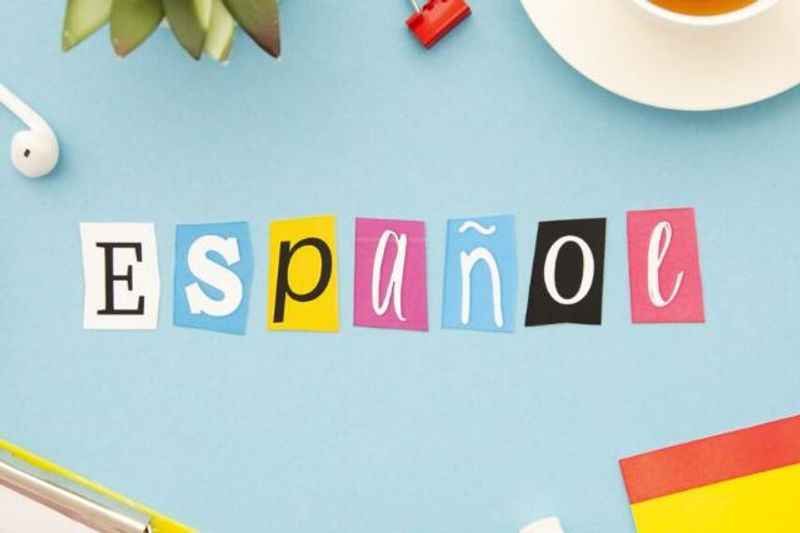
Learning Spanish numbers and improving your Spanish language skills is beneficial for travel, especially in Latin America. Understanding numbers in Spanish allows you to handle currency, and prices, and navigate transportation easily.
It enables you to communicate effectively in various situations, such as booking accommodations or ordering food at local restaurants. Moreover, mastering Spanish pronunciation enhances your ability to be understood and connect with locals.
Whether you're exploring vibrant markets or engaging in everyday conversations, knowing the numbers in Spanish opens doors to authentic experiences and meaningful interactions. It empowers you to immerse yourself in the rich culture and embrace the wonders of Spain and Latin America.
Counting in Spanish might not seem like a vital skill, but knowing Spanish numbers opens the door to better communication with a native speaker, deeper cultural immersion, and the ability to read and pronounce Spanish words better. It is best to know how to count in Spanish.
FAQs About Spanish Numbers
Let's look at some frequently asked questions about numbers in Spanish.
What is the best way to learn Spanish numbers?
The best way to learn Spanish numbers is through consistent practice and immersion. Start with counting exercises, learn the basic numbers, and gradually progress to larger ones. Practice listening and repeating numbers in context, such as phone numbers or prices. Engaging in conversations and using numbers in real-life situations will reinforce your learning and make it more natural.
When do Spanish numbers have 'y' (eg. 'y uno,' 'y cinco,' 'y siete')?
In Spanish, the word 'y' (meaning "and") is used to connect numbers from 30 to 99 when they appear together. For example, ochenta y dos means "eighty-two," "cuarenta y siete" means "forty-seven," and "setenta y nueve" means "seventy-nine."
Spanish numbers follow a predictable pattern and once you know the pattern, they are very simple.
Do I have to learn Spanish numbers to visit Spanish-speaking countries?
While you do not have to master Spanish numbers to get by, learning them is highly beneficial for traveling. Numbers are crucial for understanding prices, times, dates, and addresses, and communicating basic information. Knowing numbers will enhance your experience in Spanish-speaking countries, facilitate interactions, and help you navigate daily tasks more effectively.
Why is it useful to know Spanish ordinal numbers and cardinal numbers?
Knowing Spanish ordinal numbers (e.g., first, second, third) is essential for expressing order, ranks, and positions. It enables you to describe sequences, dates, and preferences.
Cardinal numbers (e.g., one, two, three) are vital for counting, giving quantities, and understanding numerical information.
What is a million millions?
In Spain a billón is one million millions, whereas in the Anglo-Saxon system, a billion is one thousand millions. Mil millones in Spanish is a billion in English.
This is because the Spanish use what is called the long scale system. This system alternates between a scale word and its thousand when naming large numbers. So, billón in Spanish, which sounds like the word "billion" in English actually means a million millions, or 1,000,000,000,000.
Summing Up: Spanish Numbers: How to Count from 0 – 1,000+ in Spanish
Mastering Spanish numbers is a very beneficial skill for anyone learning the language. This article provides a structured and straightforward approach to counting in Spanish from 0 to 1,000+, breaking down the numbers into manageable groups with clear patterns.
Learning the basic numbers and multiples of 10 empowers learners to communicate effectively in various contexts. Whether it's quantifying items, expressing dates, or understanding prices while traveling in Spanish-speaking countries, knowing the numbers opens doors to seamless interactions.
With the suggested online resources, learners can embark on a successful journey to becoming fluent in Spanish numbers.







